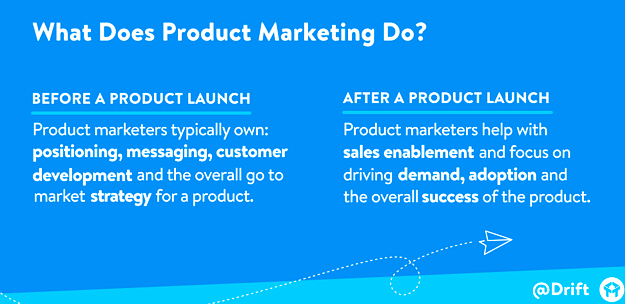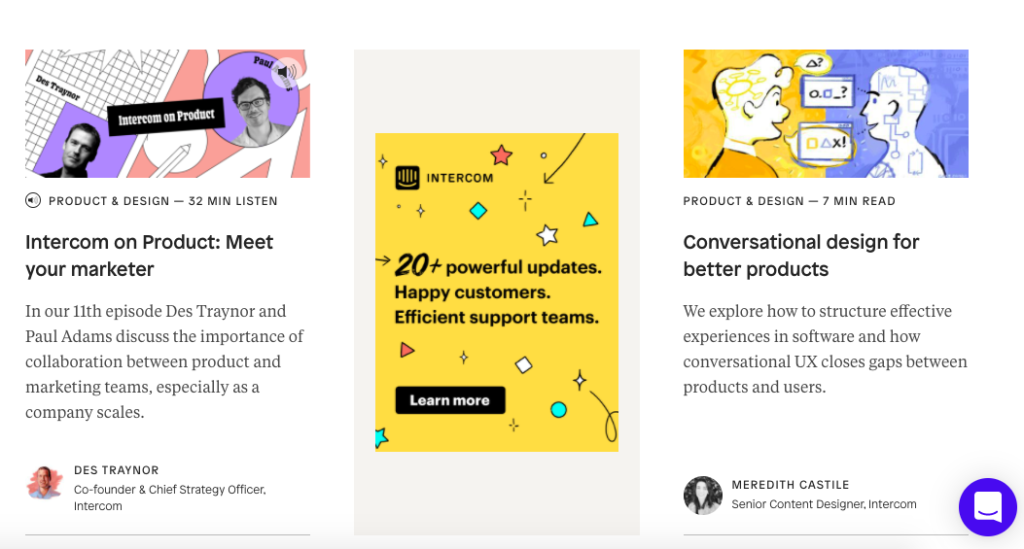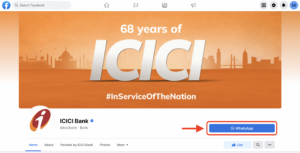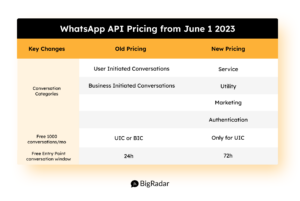Impact of Product Marketing – Spotify
Revenue model and value proposition
Spotify operates a freemium model with the majority of its users streaming music to their mobiles or desktop via apps or web browsers. Users subscribe for free get ads between tracks which are part of the Spotify revenue model.
According to Wikipedia entry,
- In November 2011, more than 2.5 million paying subscribers signed up to its service.
- In August 2012, there were four million paying Spotify subscribers responsible for at least €20 million per month in revenue.
- By March 2013, Spotify had grown to six million paying customers globally (a figure that remained in December 2013) and 24 million total active users.
- By May 2014, Spotify had grown to ten million paying customers and 30 million free users.
- By January 2015, Spotify had grown to 15 million paying customers and 45 million free users.
- In April 2020, Spotify reached 133 million premium users.
Business Overview
- The clear value proposition for consumers – By offering unlimited music streaming, Spotify shifted consumer behaviour from a transaction-based model to an access-based model.
- Personalized content drives higher retention – Spotify’s personalized, access-based model, drives significantly higher retention rates compared to other music streaming services
- The user-generated content allowed users to creatively express themselves, building a stronger community on Spotify
- Spotify also empowered its suppliers by helping artists and labels better monetize, distribute, and analyze their songs, Providing value to both the sides of the market place.
Spotify continues to build a market-leading franchise in music and entertainment
- To increase its penetration rate in existing markets, Spotify will continue enhancing the product’s freemium service, personalization, and content offerings to new and existing markets
- With strategic acquisitions, Spotify seeks to differentiate and keep users on its platform with its superior user experience, curated playlists, discovery mechanisms, and data-driven personalization.
- Improve gross margins through audience scale.
- Maintain or improve margins in the ad-supported business to unlock costless, rapid growth.
- Develop a stronger moat through proprietary and diversified content.
- Spotify makes adding friends and family to the same plan seamless.
Spotify checked all the boxes here by delivering a product experience that was centred around listeners and perfectly timed for the market. By offering consumers a legal and convenient solution to access music, Spotify’s product unlocked an audience willing to pay for music, which subsequently increased monetization across all players in the music ecosystem.
6 Lessons about product marketing at a startup
- Your product marketing will evolve as your team grows
- Product marketing is a team effort
- Product marketing is both external and internal
- Everybody does product marketing
- The earlier, the better, when it comes to marketing and product conversations
- There is no One True Way that a product marketing team should look
The role of product marketing
The evolution of Product Marketing is one of the important trends in software marketing today.
Hubspot says “its the process of bringing a product to market”, while Drift breaks it into two separate roles: “before” and “after” a product launch.
Product Marketing connects the dots between the product and the market, in both directions.
This means that the Product Marketing role is responsible for two flows:
- Understand the market and shape the product
- Communicate the product to the market

Product Marketing is responsible for developing positioning, messaging, competitive differentiation, and enabling the Sales and Marketing teams to ensure they are aligned and work efficiently to generate and close opportunities.
With such a competitive market it’s more important than ever to have a team solely dedicated to understanding market and buyer needs and using that knowledge to ensure your company executes compelling marketing and sales strategies.
Product marketing for SaaS products
Imagine marketing for something which literally has no physical presence. Or marketing something which may only be interesting to a B2B company and probably make less sense to an average person.
SaaS marketing can be challenging. SaaS companies should begin planning their marketing at the product itself and work their way from there.
3 Key elements to product marketing
- Keep it simple – Device a simple marketing campaign
- Know your user
- Meet user expectations
Peter Cohen, managing partner of SaaS Marketing Strategy Advisors says,
When [SaaS customers] need a solution, they do some online research, maybe ask a colleague, try the solution or watch a demo, and then buy. The whole process might take a few days, maybe a few hours. There’s no long, drawn out sales engagements, RFIs and RFPs, head-to-head “bake-offs,” contract negotiations, blah, blah, blah. Customers find it, they see it, they like it, they buy it. Done.

As per the small biz trends data, the average number of SaaS applications utilized by small businesses is anywhere between 25 to 100. The SaaS market is highly saturated today, and it is crucial for vendors to stand out in the crowd.
Why Is Product Marketing Important?
SaaS market is highly competitive. You cannot get a foothold in the market if you don’t hit it running with a fully conceptualized marketing plan. A great product means nothing if it can not get the attention of the people who can benefit from it. Hence, know your audience and look out for how and where to reach them?
The role of product marketing has expanded and has become cross-functional.
Get in partnership with your product management, inform them of the product to build, and whom to build them for, based on time spent in-market and making it customer-centric. You also determine how to price those products in partnership with finance and leadership. Finally, you work with sales and marketing to determine how to sell them.
Steps of Product Marketing
- Product research
- Product story
- Product focused content
- Product launch plan
- Product launch meeting
- Community engagement
- Sales enablement
SaaS product lifecycle
Product development is the process of designing, building, operating, and maintaining the product or services. Software products and services have to be aligned with both the software product life cycle and the software development life cycle. Managing each stage of the product life cycle determines the success and failure of a product.
Software development settings pay more emphasis on the functional aspects because it is deployed on an infrastructure based on security, compliance, control, operational transparency, and perceived service level requirements.
The product life cycle consists of three phases
- Develop the product
- Operate the product
- Decommission the product
Product initiation phase
- Submit a request for new service
- Received and prioritized by the Program Management Office
- Requests are reviewed by various management
- After approval, funding and resources are set up
Feasibility Phase
- The idea is explored in more depth
- Evaluation at the engineering and management level
- Evaluated for technical feasibility
- Outlines the general architecture of the proposed service
- The Feasibility Analysis
- These documents summarize time and cost estimates and other investment information
Design and Plan Phase
- Marketing Service Description, Technical Service Description, and Design Specifications, are stabilized.
- Documents containing all the details regarding the development service is shared among the team
- Analyze operations, QA, and customer requirements
Development Phase
- The actual engineering of the service is completed
- Code and documentation complete
- Ready for testing phase from a system integration test perspective
- Vendor Requirements met
- Integration Testing & Results Complete
- Approval by Project Team
Testing Phase
- Removal of the bugs
- Performance
- Load
There are four stages to SaaS product lifecycle:

A product begins with an idea, and inside the limits of present-day business, it isn’t probably going to go further until it goes through research and development (R&D) and is discovered to be possible and conceivably beneficial.
- Introduction
At this point, you are trying to work out whether or not you are solving a problem. It involves a lot of research, reading, and discussion. Though the growth at this stage is generally rather slow. Depending on how useful the product is and the needs of the user it addresses, its popularity may grow.
At this stage, one may need to coordinate their advertising procedures towards persuading sellers and retailers to really put these products on sale as a component of the other product available. One may likewise attempt to consider market specialties, gaps between client needs and existing products and subsequently settle on an appropriate distribution channel for the product.
2. Growth
Once the product has reached some of the population, through word of mouth or user reviews, the brand image starts spreading. This is the stage where you really need to scale up your sales and marketing efforts. Investment is required to be made on the growth of the product during this stage.
Monthly recurring revenue is the engine that makes a SaaS business work. If not, the impact of this can be reduced somewhat by encouraging customers to pay annually. Though it might take 18-36 months of income from each early customer before the cost to acquire them is recollected.
A careful analysis of your sales process, and how that integrates with your inbound marketing strategy is required.
The success of this stage depends on your acquired knowledge about the customers their needs, problems, and challenges.
3. Maturity
During this stage, you need to experiment with new techniques to accelerate your growth. Demand reaches a peak and this is maintained for a particular time period where most sales take place. Competitors might have introduced themselves in the market race by this stage.
The business at this stage is to maintain the same sales level and demand for as long as possible. However, this happens with your continuous effort to invest in growth and experimentation to find additional opportunities.
Growth may slow down, eventually flattening out. Yet operational expenses continue to climb as they strive to compete with new players in the market. A particular focus during this phase will go into keeping churn down.
Your SaaS company it at a prime stage. You should have the market, money and talent maintain and grow your business at this point. Focus on case studies, and proving the real business benefits organizations have achieved with your software.
Some companies might even raise additional capital ventures to expand their market reach.
4. Decline
At this stage, the decision is made either to keep the existing product in the market or start fresh. The focus here is on optimizing the process and entering new markets. Perhaps you can think about strategic acquisitions.
Things like training webinars, eBooks, guides, online courses, and similar go a long way to improving customer retention and hitting customer lifetime value targets.
And no matter where your SaaS company currently is in its life cycle, there are always opportunities to learn, adapt, and excel.
SaaS Product Marketing Strategy
1. Content Marketing
Posting high-quality content on your website that is relevant to your target audience is an effective way to get more website visitors. If you have valuable internal data, share it through content marketing to attract new customers, and build an appreciation for your brand.
The advantage of content marketing is that just like a smart investment, it increases in value over time. SaaS business that use content to generate leads:
Intercom’s content marketing strategy focuses on product management, design, startups, and marketing.

Pointers
- Create webcasts, podcasts, and expert guides to allow prospects to understand how your software solves their problem
- Create vendor comparisons, case studies, and testimonials for providing customers to chose your product while making a decision
- Create e-books, white papers, social posts, etc to create awareness for your software product
2. Product Trials
A free trial generates value for your product. If you want people to use your product this is a good way to go by making them experience the benefit they generate with the product. Since they are self serve, you continue to generate leads with little ongoing marketing investment.
Pointers
- Ensure people have a positive experience with the product
- Provide certain support, depending on the complexity of your product
- Demonstrate value without overwhelming the prospect
The key factor is that the prospects are spending time to get to know your product, which depicts a strong indicator of buyer intent. The key is to have an effective strategy that gets users to make a purchase later.
3. Search Engine Optimization (SEO)
SEO can help generate lots of leads that are relevant and get converted easily. It is aimed at bringing more website visitors and making your website visible to the relevant target audience.
Pointers
- Create custom banners with Calls to Action
- Use a responsive site design
- Reduce the page load time
- Perfect your technical SEO
- Keyword research
4. Google AdWords
The key here is to test different variations of ad copy and analyze what works best for your brand. PPC delivers targeted traffic to your website but it also comes with a lot of inherent predictability – both in terms of cost and results.
Run a series of test to ensure the activity that generates the best ROI for the business.
Pointers
- Target low competition keywords and offer downloadable content in return for a sign-up
- Run sponsored post campaigns on social media
- Advertise your software on the Google Display Network
- Run Gmail ads and reach prospects
- Run funnel-based remarketing campaigns
- Run paid ads on Quora
5. Referral Marketing
For this strategy to work, you need to provide incentives to your customers. There are software available which can power your referral program from start to finish. Though this needs to do with considering the factor that a no incentive won’t bring any referrals whereas, if you incentivize too heavily, you may get low-value quality referrals. However, research depicts a rise in leads with Referral marketing.
Regular feedback from your customers and constantly try to improve your customer service. SaaS marketing can be a different form of marketing but the right strategy can be a game-changer for your business. Lay down a certain foundation to optimize your marketing capabilities.
- Use your website as a lead generation tool and test the layout and calls to action across it to drive maximum inquiries
- Enhance your website and marketing with thought leadership
- Focus on the business benefits of your solution not on the technology to generate more leads
- Increase customer retention rates
- Nurture the prospects by adding value at every stage to provide a better customer experience
- Increase customer retention rates
- Consider marketing automation tools to make day-to-day outreach easier
Marketing Channels for Your SaaS Product
Not only do you have to market it right, but you must also use the right channels to target your audience demographic. You need customers to be interested in you and avail your product and more importantly, you need them to stay. The SaaS industry is growing globally and across platforms.
The primary purpose of any channel of distribution is to bridge the gap between the producer of a product and the user of it, whether the parties are located in the same community or in different countries thousands of miles apart.
- Affiliate Partners
It is a program in which the company selling product rewards affiliates who promote and recommend that product to their audience.
- Value-added Resellers
Purchases third-party software to sell to the end-user at a markup.
- Distributors
Provides a connection between the production company and a network of resellers who will then sell to the end-user. Distributors also provide training, technical assistance and other kinds of support to channel resellers.
- Managed Service Providers (MSPs)
MSPs provide operational and maintenance IT services to businesses. They may offer network maintenance, hardware repair, help-desk services, email management and many other services.
- System Integrators
Third-party hardware and software components and integrate them to create a customized solution for the end-user.
- Consultants
They may provide advice, design services, project management, administration and other types of support needed to bring the project to fruition.
SaaS Marketing Metrics
Beyond promoting your trial via online channels, you want to carefully measure your trial takers and subscribers.
- Leads
The visitors on your website who have filled out the form usually in exchange for a download or free resource. Doing so they provide certain detail about themselves – email address, their name, job title, business name or website address.
There are different types of leads – leads, marketing qualified leads (MQLs), and sales qualified leads (SQLs).
An MQL is a lead that qualifies themselves as a potential customer. They demonstrate an interest in your solution by viewing several product-focused pages or engaging with more product-focused content offers.
An SQL is a lead that meets the MQL qualification criteria and has deemed to show interest in your product by either requesting a sales conversation or free demo.
Analyzing traffic is useless if you are not tracking the number of unique visitors that convert into leads.

- Email Subscribers
Visitors who’ve signed up for your newsletter, mailing list or blog updates. Even though they share their Email information, they do not any indication of sales intent, or interest in your SaaS product, making them distinct from leads.
- Unique Website Visitors
These are the individuals that visit your website over a particular period of time. These visitors are not to be confused with sessions, which are the total number of visits in a given timeframe and may count the same individuals multiple times.
Seeing growth in unique visitors indicates that your audience is growing and that your content is resonating with them.
- Paying Customers
These are the people who have agreed to use your product or service. However, in order to assess the overall performance of your marketing strategy, it’s rather important to track how marketing-generated leads convert into paying customer.
- Free Trials & Demo Requests
SaaS products are often offered free trials or demos to promote their product. Free Trial users are usually counted as MQLs. Little commitment from the buyers and just giving customers an experience of the product so as to give a push towards sales.
Some SaaS products free trials aren’t viable, and instead, running product demos is a more effective way of proving out the value of your product. Demo requests are usually regarded as SQLs. It requires a greater commitment from the visitors to get through the demo.
Though the distinction isn’t always clear just qualification criteria should be defined.
- Conversion Rates
The lead-to-customer rate is the number of leads that are converted into customers.
There are two different ways to produce more customers: expanding the number of individuals entering the sales funnel and improving the rate at which customers transform into leads, and leads transform into customers.
Visitor to Lead

Lead to Customer

MQL to SQL

Free Trial to Paid Customer

- Marketing Spend
It is the expenditure made for the marketing purpose. It is useful to track how the marketing expenses convert into revenue.
- Growth Rate
MQL Growth Rate refers to the rate at which Marketing Qualified Leads are growing over time. And SQL refers to tracking the rate at which growth of sales-qualified leads is noticed.
For example, If we have 200 qualified leads in a period of one month, and 220 in the next month. The MQL for tracked monthly would be a 20% rise.
If we generate 50 sales qualified leads and 60 in the next month. This would lead to a growth of 20% from the previous month.
SaaS Product Growth Statistics
Gartner anticipates that SaaS solutions will generate revenue close to $105 billion in 2020 alone. This is $20 million more than the estimate made by Gartner in 2019. The contribution to this jump is also seen as per the pandemic with SaaS solutions among the easiest to adopt and roll out with remote working.
Worldwide Public Cloud Service Revenue Forecast (Billions of U.S. Dollars)

BPaaS = business process as a service; IaaS = infrastructure as a service; PaaS = platform as a service; SaaS = software as a serviceNote: Totals may not add up due to rounding.
Source of information: Gartner
As per BMC SaaS will generate close to $141 billion.
SaaS Customer and Business Statistics
- 86% of end-users said SaaS helps them succeed more than desktop alternatives. (BetterCloud)
- 73% of organizations indicated that nearly all their apps will be SaaS by 2021. (BetterCloud)
- 38% of organizations surveyed reported they were running almost entirely on SaaS operations already. (BetterCloud)
- Despite security concerns, 93% of CIOs indicate they’re already adopting or are soon planning to adopt SaaS solutions. (Bmc)
- 80% of businesses already use at least one SaaS application (99Firms)
- 85% of small organizations will invest in SaaS by 2020. (99Firms)
SaaS growth rates, IPOs, and acquisitions all indicate this trend is not ending anytime soon.
About the author
Everyone at BigRadar contributes to the blog.
- BigRadar Teamhttps://bigradar.io/blog/author/bigradar/
- BigRadar Teamhttps://bigradar.io/blog/author/bigradar/
- BigRadar Teamhttps://bigradar.io/blog/author/bigradar/
- BigRadar Teamhttps://bigradar.io/blog/author/bigradar/



![Featured image for blog post Optimize Your Website For Lead Generation [2023]](https://bigradar.io/content/uploads/2023/02/Increase-Your-Website-Traffic-Conversion-300x200.png)